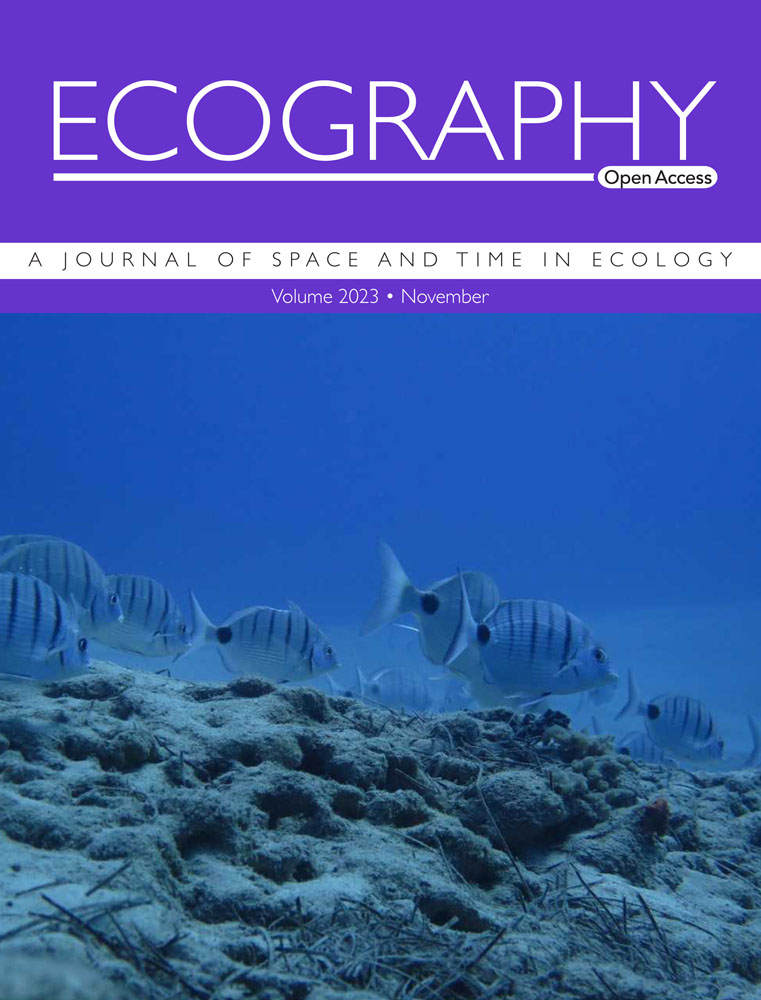是什么控制了森林垃圾的分解?横跨十座山的协调分布式茶袋实验
IF 5.4
1区 环境科学与生态学
Q1 BIODIVERSITY CONSERVATION
引用次数: 0
摘要
山区森林生态系统中的废弃物分解是影响碳和养分循环的重要过程。然而,由于不同研究的可比性有限,以及有关当地微气候和非气候因子的数据有限,很难准确估计垃圾分解对陆地生态系统的贡献。在这里,我们设计了一个跨越十座山脉的亚热带和热带森林的协调实验,以评估垃圾分解率和稳定性的变化。我们使用茶袋指数作为标准化方案,测试了海拔、土壤小气候、土壤生理化学、树种多样性和微生境是否会影响分解率和稳定性。我们发现,不同山区的分解率和稳定性与海拔高度和各环境因素的关系各不相同。海拔高度对西部山区的分解率和稳定度有明显影响,由于环境相对寒冷,西部山区的土壤小气候也起着主导作用。在所有山脉中,分解率随着海拔的升高而降低,而稳定度则随着海拔的升高而升高。在小气候方面,分解率随着生长季节土壤温度和温度变化的增加而增加,而稳定性则随着土壤温度和湿度变化的增加而降低。在非气候因素方面,分解率随着树种多样性的增加而增加,而稳定性则随着土壤酸碱度和坡度的增加而降低。我们的研究结果加深了人们对不同因素如何控制森林废弃物分解的总体认识,突出了土壤小气候在控制寒冷环境和高海拔地区碳和养分循环中的主导作用。本文章由计算机程序翻译,如有差异,请以英文原文为准。
What controls forest litter decomposition? A coordinated distributed teabag experiment across ten mountains
Litter decomposition in mountainous forest ecosystems is an essential process that affects carbon and nutrient cycling. However, the contribution of litter decomposition to terrestrial ecosystems is difficult to estimate accurately because of the limited comparability of different studies and limited data on local microclimatic and non‐climatic factors. Here, we designed a coordinated experiment within subtropical and tropical forests across ten mountains to evaluate variation in litter decomposition rates and stabilization. We tested whether elevations, soil microclimate, soil physiochemistry, tree species diversity, and microhabitat affect decomposition rates and stabilization by using the Tea bag index as a standardized protocol. We found that the associations of decomposition rates and stabilization with elevation and each environmental factor varied between mountains. Elevation significantly affected decomposition rates and stabilization in the western mountains, where soil microclimate also played a dominant role due to relatively cold environments. Across all mountains, decomposition rates decreased while stabilization increased with increasing elevation. In terms of microclimate, decomposition rates increased with increasing soil temperature and temperature variation during the growing season, whereas stabilization decreased with increasing soil temperature and moisture variation. In terms of non‐climatic factors, decomposition rates increased with increasing tree species diversity, whereas stabilization decreased with soil pH and slope. Our findings enhance the general understanding of how different factors control forest litter decomposition, highlighting the dominant role of soil microclimate in controlling carbon and nutrient cycling in cold environments and high elevations.
求助全文
通过发布文献求助,成功后即可免费获取论文全文。
去求助
来源期刊

Ecography
环境科学-生态学
CiteScore
11.60
自引率
3.40%
发文量
122
审稿时长
8-16 weeks
期刊介绍:
ECOGRAPHY publishes exciting, novel, and important articles that significantly advance understanding of ecological or biodiversity patterns in space or time. Papers focusing on conservation or restoration are welcomed, provided they are anchored in ecological theory and convey a general message that goes beyond a single case study. We encourage papers that seek advancing the field through the development and testing of theory or methodology, or by proposing new tools for analysis or interpretation of ecological phenomena. Manuscripts are expected to address general principles in ecology, though they may do so using a specific model system if they adequately frame the problem relative to a generalized ecological question or problem.
Purely descriptive papers are considered only if breaking new ground and/or describing patterns seldom explored. Studies focused on a single species or single location are generally discouraged unless they make a significant contribution to advancing general theory or understanding of biodiversity patterns and processes. Manuscripts merely confirming or marginally extending results of previous work are unlikely to be considered in Ecography.
Papers are judged by virtue of their originality, appeal to general interest, and their contribution to new developments in studies of spatial and temporal ecological patterns. There are no biases with regard to taxon, biome, or biogeographical area.
 求助内容:
求助内容: 应助结果提醒方式:
应助结果提醒方式:


